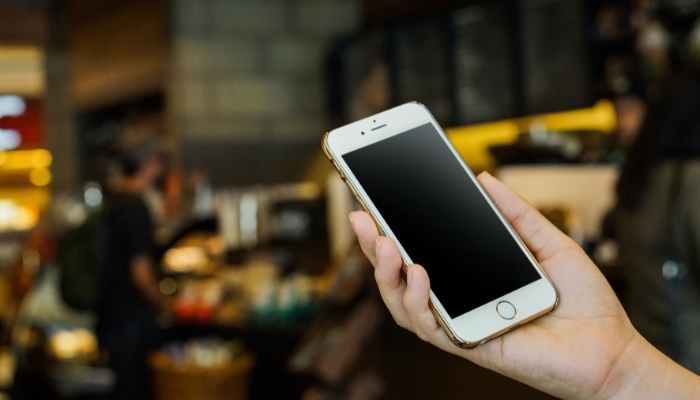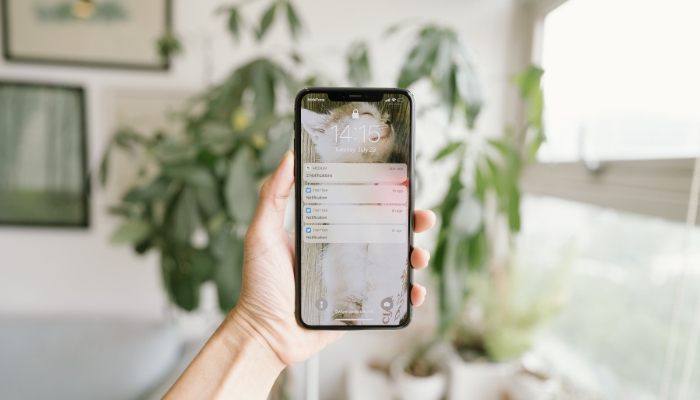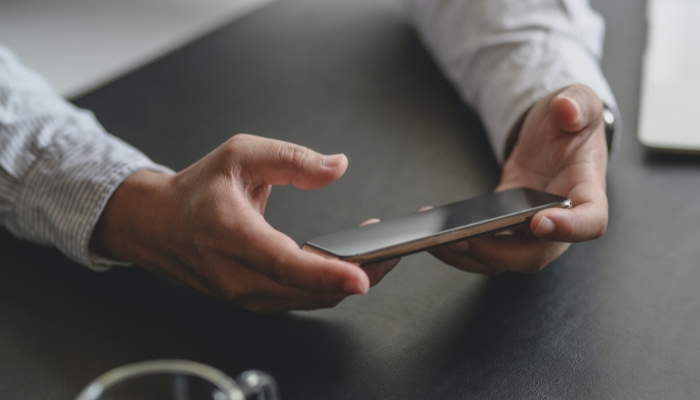
Imagine you’re a detective, hot on the trail of a lost phone. The IMEI, or International Mobile Equipment Identity, can be your secret weapon, your compass guiding you to the phone’s rightful owner. If you are wondering how to find phone owner by imei then this guide will help you.
To find a phone owner by IMEI, contact the mobile service provider or law enforcement with the IMEI number. They can use it to identify the device’s owner, but personal information may not be disclosed without proper authorization. Always ensure legal and ethical compliance in this process.
It’s not as simple as typing in a number and getting an instant answer, though. There are legal hurdles and technical barriers to consider, and you’ll have to work with mobile carriers who might not be as helpful as you’d hope. So, are you up for the challenge? Let’s find out how to find phone owner by imei.
Understanding the IMEI Number
Let’s dive into understanding the IMEI number, a unique identifier that acts like a fingerprint for your phone. This 15-digit number, standing for International Mobile Equipment Identity, is unique to every mobile device. You’ll find it imprinted on the battery of your phone or in the device’s system information.
The IMEI number has a crucial role. It helps identify the phone owner, making tasks like tracking lost phones or blocking stolen ones possible. It’s the number network providers use to register your device on their system. So, when you switch on your phone, the network providers know it’s you because of your IMEI number.
What’s more, the IMEI number also gives detailed information about your device, including the model, origin, and even the serial number. This means if your phone gets lost, the network providers can use the IMEI number to lock it down, making it useless for anyone else.
In essence, the IMEI number is like your phone’s ID card. It’s a crucial tool for protecting your mobile device and, consequently, your privacy. This brings up an important question: How to protect my IMEI number? So, understanding it and keeping it safe is vital for you as a phone owner.
Understanding the Role of IMEI Numbers

Now that you’ve got a grasp on what an IMEI number is, it’s crucial to understand its role in safeguarding your device and personal data. This unique digit IMEI number carries much more importance than you might initially realize.
- IMEI Check Status: This allows you to determine the status of your phone. If it’s lost or stolen, an IMEI check status can reveal whether your device is blacklisted, assisting in its recovery.
- Android IMEI: Each Android device has a distinct IMEI number. It’s integral for device identification, specifically when it comes to android IMEI tracking.
- AT&T IMEI Checker: Network providers like AT&T use the IMEI number to verify the device’s authenticity before allowing it to connect to their network. The ATT IMEI checker is a valuable tool for this process.
- Understanding the Role of IMEI Numbers: Beyond identification, IMEI numbers play a significant role in security, primarily through IMEI number links to network providers and security systems. They deter theft, facilitate device tracking, and enable network blocking of lost or stolen phones.
In essence, your phone’s IMEI number is a powerful tool, safeguarding your device and the personal data it holds.
Methods to Locate Your Phone’s IMEI Number
Every mobile phone comes with a unique 15-digit IMEI code, a permanent identifier that’s essential in situations like tracking a lost device or checking its warranty status. Knowing how to locate your phone’s IMEI number is crucial, and there are several straightforward methods to do this.
Checking IMEI on Device’s Packaging
When you buy a new mobile phone, whether it’s one of the latest Android phone models or an Apple store purchase, the IMEI number is usually found on the box or device packaging.
This method is particularly helpful if your phone is inoperable or lost. The IMEI is typically listed near the barcode and serial number, providing direct access to this vital information. Keeping your phone’s box in a safe place ensures you always have a backup method to retrieve the IMEI.
Using Phone Settings to Find IMEI
For most modern devices, finding the IMEI number through device settings is a simple process. In Android phones, you can generally find this information in the ‘About Phone’ section in the settings app.
For iPhones, the IMEI is located in the ‘General’ and ‘About’ sections of the settings. This method is highly reliable as it provides the device’s intrinsic identifier directly from the manufacturer’s database, ensuring accuracy.
Dialing a USSD Code to Display IMEI
A universal method that works for almost all cell phones is dialing a specific USSD code, which for many carriers is *#06#. This method allows for quick access to your phone’s IMEI, displaying it immediately on your screen.
It’s a convenient option when you need to quickly check the IMEI, especially if other methods like accessing the phone app or settings are not viable. This basic process of checking the IMEI is widely used due to its efficiency and ease of use.
Knowing these methods helps ensure you’re prepared, whether it’s for a basic process like selling your phone or more critical situations involving theft incidents or tracking a lost device using cell phone tracking apps.
Using IMEI to Locate a Lost or Stolen Phone

Losing a phone or having it stolen can be a distressing experience. However, the 15-digit IMEI number can be a vital tool in locating your device. This unique permanent identifier enables various methods to track and potentially recover your phone.
Collaborating with Network Providers
One of the first steps in locating a lost or stolen phone is to contact your mobile service provider. By providing them with your phone’s IMEI number, they can flag the device as lost or stolen in their device blacklist system. This action prevents the phone from being used on their network, and in some cases, other carrier networks as well.
Moreover, network providers often have location services and tracking processes that can help pinpoint the device’s last known location. This is especially useful if your phone is still powered on and connected to the cellular network.
Reporting to Law Enforcement
In addition to contacting your service provider, it’s crucial to report the loss or theft to local law enforcement. When filing a report, provide the police with your phone’s IMEI number.
Law enforcement agencies often have access to more sophisticated tracking tools and can collaborate with cellular service providers and emergency services to locate your phone. Additionally, if your phone was used in any illegal activities after it was lost or stolen, having a police report can help protect you from any associated liabilities.
Online Tools and Services for Tracking
Several online tools and services can assist in locating a phone using its IMEI number. These cell phone tracking apps and websites often require you to enter the IMEI number to track the device’s location. While not all these services can provide real-time tracking, they can offer valuable information such as the last known location of the phone. It’s important to use reputable and reliable services, as some might be scams designed to collect personal information.
When using any of these methods, remember that the effectiveness of locating a lost or stolen phone depends on various factors like the phone’s battery life, whether it’s turned on, and its connection to a mobile network. Nevertheless, the IMEI number serves as an essential tool in the recovery process, highlighting its importance as a unique and efficient identifier in modern technology.
Legal Considerations in Tracing a Phone Using IMEI
While it’s fairly straightforward to use an IMEI number for phone tracing, you must consider the significant legal implications that come with it. You might think that since the IMEI number is unique to each phone, tracking it would be a simple task. But in fact, it’s not as cut-and-dried as you might expect.
First, it’s crucial to understand that the cellular network and the rightful owner of the phone are the only entities legally allowed to use the IMEI for tracking purposes. If you’re not the owner and you’re not a network provider, using the IMEI to track a phone can land you in hot water legally.
Moreover, even if you’re the rightful owner, using the IMEI for phone tracking must be done responsibly. If you lose your phone and decide to track it using its IMEI, you must inform law enforcement about your actions. You can’t just take the law into your own hands.
The Role of Mobile Carriers in IMEI Tracking
Ever wondered how mobile carriers play a crucial part in IMEI tracking? Well, they’re pivotal in this process. When you’re trying to find a phone owner by IMEI, mobile carriers are the key providers of the necessary information.
They have access to unique device identifiers such as the IMEI number, and they can link these to specific customers. Here’s how they contribute to IMEI tracking:
- Data Collection: Mobile carriers collect IMEI numbers when phones connect to their network. This data helps in identifying the phone owner.
- Data Storage: The carriers store these device identifiers securely, allowing them to track lost or stolen phones.
- Collaboration with Law Enforcement: Mobile network operators cooperate with law enforcement agencies by providing IMEI data for investigations.
- Blocking Services: If a phone is reported stolen, carriers can block the device from accessing their network using the IMEI number.
Online Services and Apps for IMEI Tracking
In the digital age, tracking a lost or stolen phone has become more accessible thanks to various online services and apps. These tools utilize your phone’s 15-digit IMEI number, a unique identifier, to help locate your device. Here’s an overview of some popular IMEI tracking apps and the effectiveness and limitations of these online services.
Review of Popular IMEI Tracking Apps
- Mobile Tracker:
- Features: This app uses the IMEI number to track the location of lost or stolen phones. It often includes additional features like lock screen activation and emergency contacts notification.
- Pros: User-friendly interface, real-time tracking, and additional anti-theft features.
- Cons: Requires prior installation and activation, limited functionality if the phone is switched off or not connected to the internet.
- Anti-Theft Tracker:
- Features: Designed to track devices through the IMEI and offer remote control features like data wiping.
- Pros: Effective in securing data in case of theft, provides last known location.
- Cons: Needs the device to be connected to the internet, can’t track if the phone is reset.
- Check Tools and Checker Tool Apps:
- Features: These apps primarily offer IMEI validation and status checking, helping to ascertain if a phone is blacklisted.
- Pros: Useful for checking the status of a used phone before purchase.
- Cons: Do not provide real-time tracking, limited to status checks.
Effectiveness and Limitations of Online Services
The effectiveness of these IMEI tracking services can vary. They are highly effective when the lost device is turned on and connected to the internet or a cellular network. These services can provide real-time location updates, making it easier to track and recover the phone. Additionally, they can offer peace of mind by securing the data on your phone through remote lock or wipe functions.
However, these services also have limitations. If the device is turned off, has a depleted battery, or is not connected to any network, tracking becomes significantly more challenging.
Furthermore, savvy thieves might change the device’s IMEI number, rendering these tracking methods ineffective. Privacy concerns are another consideration, as these apps require access to sensitive personal information.
In conclusion, while online services and apps for IMEI tracking offer a valuable solution in locating lost or stolen devices, their effectiveness is contingent on several factors, including the device’s connectivity and status. As part of a broader strategy, including cooperation with law enforcement and service providers, they can be a powerful tool in safeguarding your mobile device.
Steps to Take After Finding a Phone Using IMEI

After successfully locating a phone using its IMEI number, the next steps are crucial in ensuring that the device is returned to its rightful owner or handled appropriately.
Contacting the Owner or Authorities
If you find a phone using an IMEI tracker app or through mobile service providers, the first step should be to try and contact the owner. This can sometimes be done by checking the contact info on the lock screen or an emergency contact listed.
If direct contact with the owner isn’t possible, the next best step is to hand over the device to the local authorities or the nearest police station. They have access to resources and network services that can help in locating and informing the owner.
Handling Found Mobile Devices Responsibly
Finding a lost or stolen phone puts you in a position of responsibility. Avoid attempting to access personal data on the device, as this could be considered unauthorized access.
Instead, ensure that the phone is kept in a safe and secure place until it can be returned to its owner or handed over to the authorities. This responsible handling respects the privacy and property of the phone’s owner.
Preventive Measures: Securing Your Phone’s IMEI
Your phone’s IMEI number is a critical piece of information that should be protected. Here are steps to secure it:
Keeping IMEI Numbers Confidential
Treat your phone’s IMEI like any sensitive personal information. Avoid sharing it unnecessarily, and be cautious about where and how you store this information. For instance, keeping a written note of the IMEI in your wallet or a secure digital space can be helpful in case the phone is lost or stolen.
Regularly Backing Up Device Data
Regular backups are essential in safeguarding your data. Whether using a cloud service, an external hard drive, or a PC, ensure that your phone’s data is backed up regularly.
This practice not only secures your personal information but also makes it easier to restore your data if you need to replace your phone. Advanced backup services often include options to remotely wipe your data if your phone falls into the wrong hands, adding an extra layer of security.
Conclusion
So, you’ve learned about how to find phone owner by imei. You understand the legal implications of tracking a phone using its IMEI. You also know how mobile carriers come into play.
Remember, it’s important to act responsibly and respect privacy laws. Finding a phone’s owner by IMEI isn’t a walk in the park, but with correct information and ethical intentions, it’s possible.
FAQs: How to Find Phone Owner By IMEI
How can I find the owner of a phone using its IMEI number?
Finding the owner of a phone through its IMEI number directly is challenging due to privacy and security reasons. However, you can report the IMEI number to the mobile service provider or local authorities. They have the means to trace the owner while respecting privacy laws. Additionally, using an IMEI tracker app can help locate the device, but it won’t directly reveal the owner’s identity.
Is it possible to track a phone if the IMEI number is changed?
Tracking a phone becomes significantly more difficult if the IMEI number is changed. The IMEI serves as a permanent identifier for the device, and altering it can mask the phone’s original identity. However, law enforcement and some advanced tracking services may still have ways to track the device based on its previous IMEI and other device analytics.
What should I do if I lose my phone and don’t know the IMEI number?
If you’ve lost your phone and don’t have the IMEI number, contact your service provider immediately. They can often identify your phone using your account details and take necessary actions like blocking the device. It’s also advisable to file a police report. For future reference, always keep a record of your phone’s IMEI number in a secure place.
Can I block my phone using the IMEI number if it’s stolen?
Yes, you can block your phone using the IMEI number if it’s stolen. Inform your cellular service provider about the theft and provide them with the IMEI number. They can add your phone to a device blacklist, rendering it unusable on their network. This also alerts other networks, increasing the chances of preventing unauthorized use of your phone.